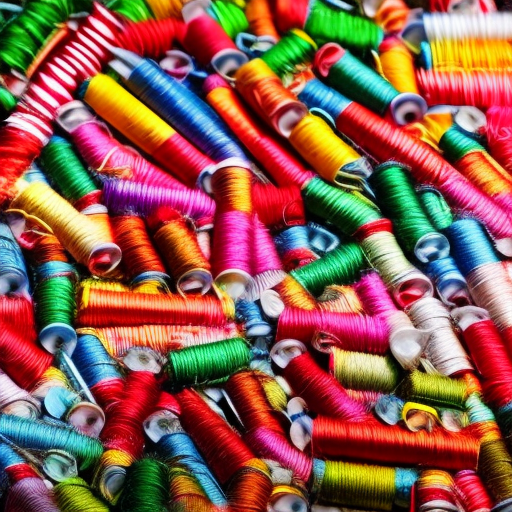

Are you facing a recurring issue where the sewing thread becomes loose at the bottom of your project? Frustrating, isn’t it? This problem can leave you with an uneven stitch and compromise the durability of your sewing work. Let’s dive into some common causes and practical solutions to fix this pesky issue.
Causes of Loose Sewing Thread at the Bottom
Several factors can cause loose thread at the bottom of your sewing project. Identifying the root cause will help you resolve the issue effectively. Here are a few possibilities:
- Incorrect Tension Settings: One of the primary causes is improper tension settings on your sewing machine. If the upper or lower thread tension is too loose, it can result in loose stitches at the bottom. Be sure to consult your sewing machine’s manual and adjust the tension accordingly.
- Incorrect Needle Size or Type: Using the wrong needle for your fabric type or an old, blunt needle can cause skipped stitches and loose thread at the bottom. Ensure you use the correct needle size and type for the fabric you are working with. Replace needles regularly to maintain optimal stitching performance.
- Thread Quality: Low-quality thread can lead to inconsistent tension and increased thread breakage. Invest in high-quality threads suitable for your project, ensuring they are suitable for machine sewing.
- Bobbin Issues: Loose or incorrectly wound bobbins can cause irregular tension, leading to loose stitches underneath. Properly wind the bobbin and ensure it is inserted correctly into the bobbin case.
How to Fix Loose Thread at the Bottom
Don’t fret! Fixing loose thread at the bottom of your sewing work is usually a straightforward process. Follow these simple steps to address the issue:
- Check Your Tension Settings: Double-check your sewing machine’s tension settings. Ensure both the upper and lower thread tensions are adjusted correctly. Make small adjustments gradually until you achieve optimal tension, resulting in balanced stitches on both sides of the fabric.
- Use the Correct Needle: Confirm you are using an appropriate needle for your fabric. A universal needle is a safe choice for most woven fabrics, but specialty fabrics often require specific needles. Replace the needle if it is blunt or has been in use for an extended period.
- Choose High-Quality Thread: Invest in good-quality thread specifically designed for machine sewing. Check that the thread is suitable for your fabric and thickness requirements. This will minimize thread breakage and ensure consistent tension throughout your project.
- Inspect the Bobbin: Take out the bobbin and re-wind it if necessary. Ensure the bobbin is inserted correctly into the bobbin case, avoiding any loose threads or snags. If the bobbin thread is still uneven, you may need to clean the bobbin area from lint buildup or consult a professional for further assistance.
Remember, practice makes perfect! It may take a few attempts to find the right combination of settings and techniques for your sewing project. Remain patient and persistent, and soon you’ll be producing beautifully stitched creations without any loose threads at the bottom!
Disclaimer: The information provided in this article is for educational purposes only. Always refer to your sewing machine’s manual and seek professional assistance if required.





Check the tension on your sewing machine
Jim Wright: Double check the bobbin size and tension first
It might be worth checking the thread size as well to make sure it’s a good match for your sewing machine – different thread types and sizes can affect the tension of your stitching!
This could also be a problem caused by the needle – it might not be the right diameter, or it might be dull or bent, which could cause loose stitching at the bottom.
Make sure the bobbin is threaded correctly and the needle is in the proper position – sometimes shifting the needle a bit to the left or right can make a big difference in the tension of stitching at the bottom.
You should also look at the stitch length, as a longer stitch will generally cause threads to be looser at the bottom.
Make sure the bobbin is wound tightly and the thread is not snagging or being pulled through the top, it will cause the thread to loosen at the bottom.
If everything looks good, it could be the material you’re using – some fabrics require more tension than others to ensure even stitching.
Check the tension of the sewing machine, it should be properly adjusted to maintain consistent tension, or else you will end up with loose stitches at the bottom.